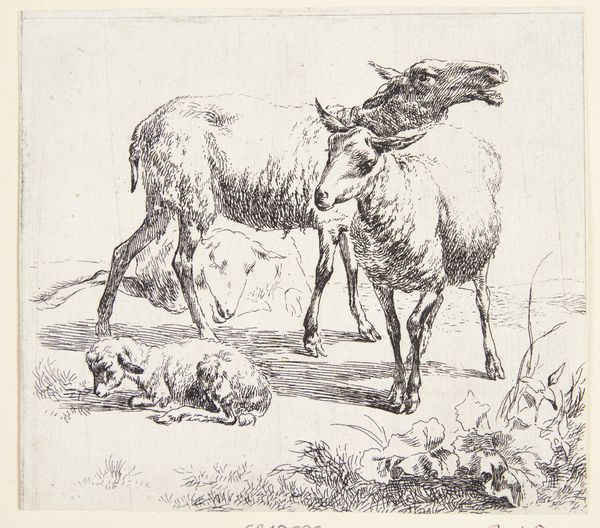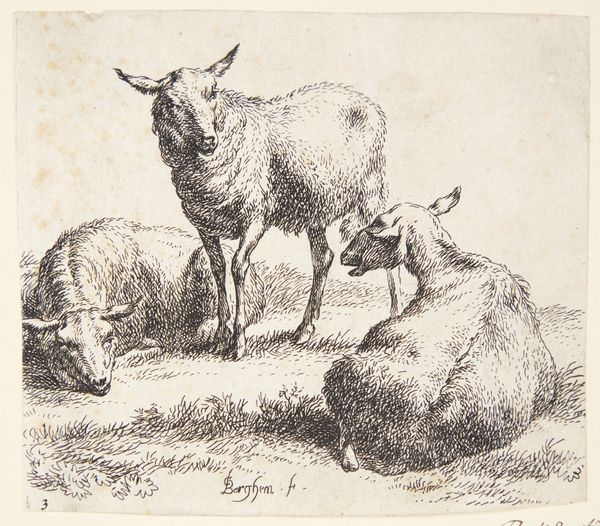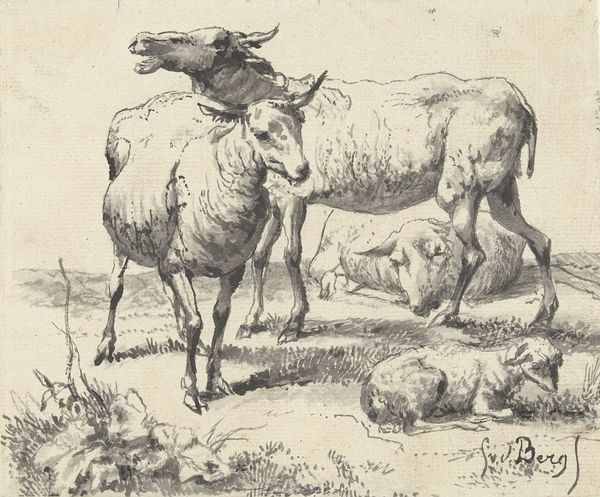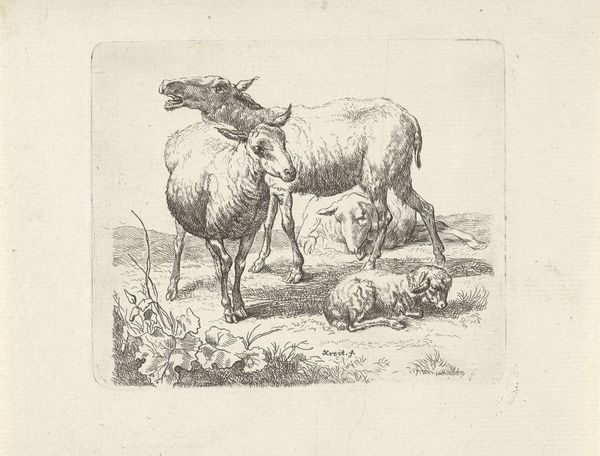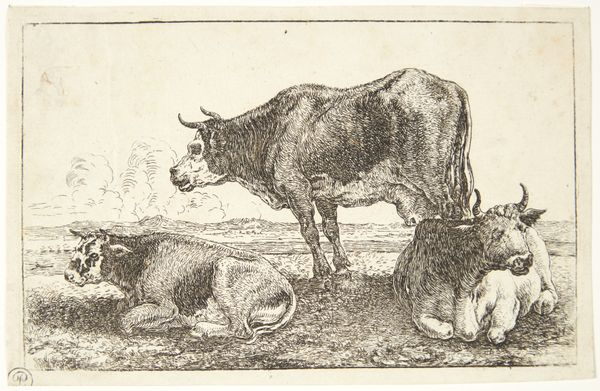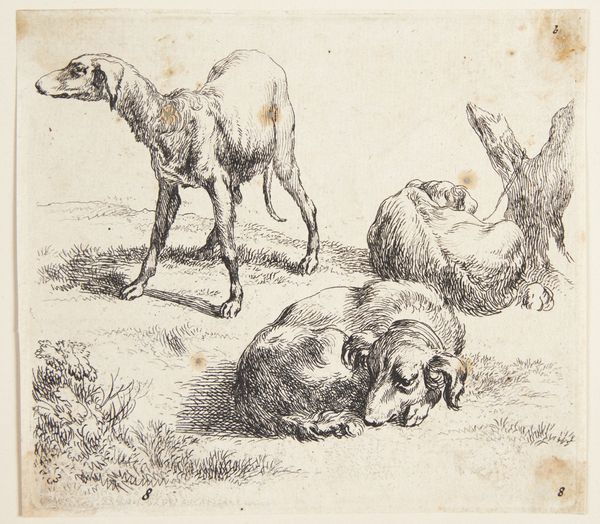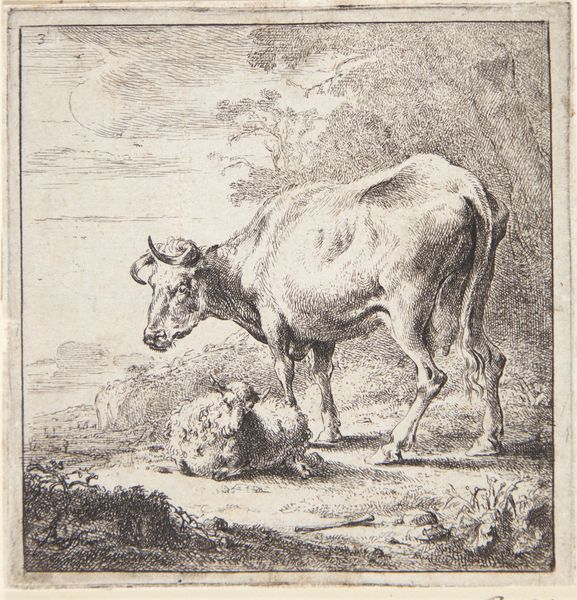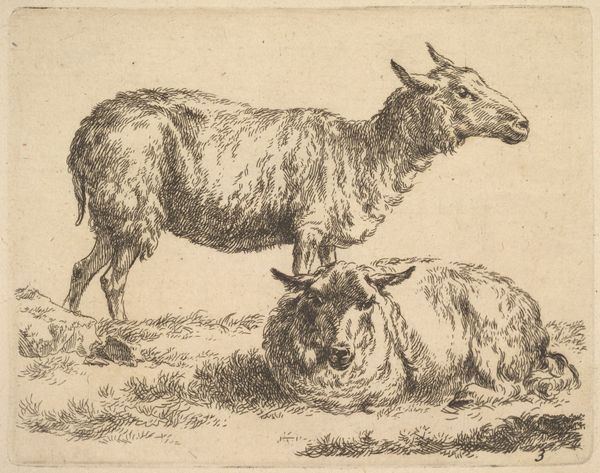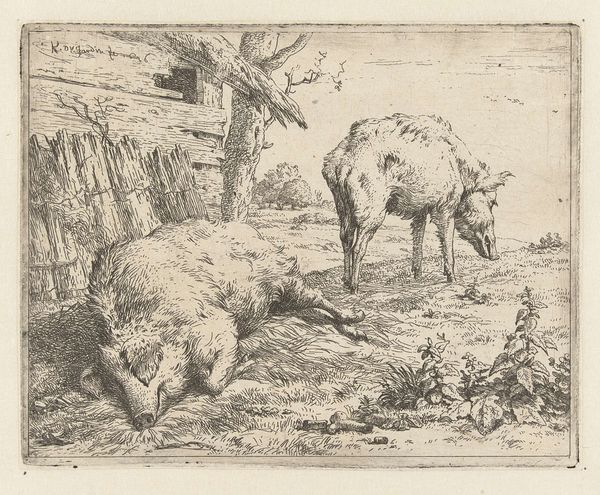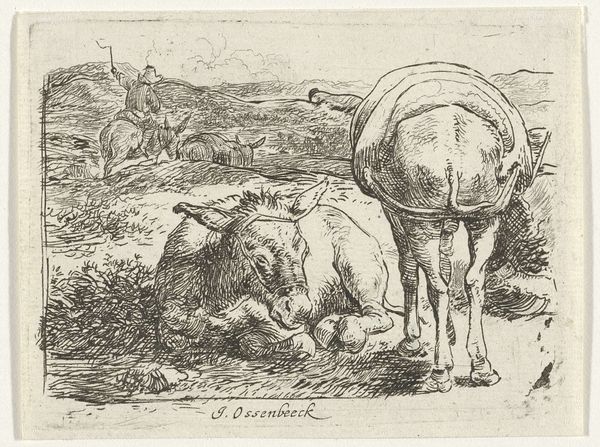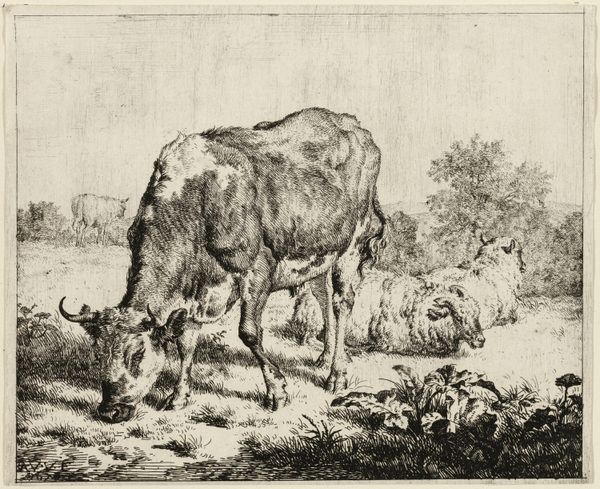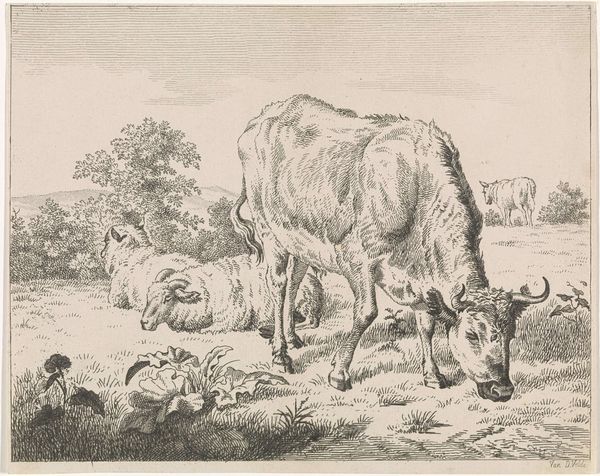
print, etching
#
dutch-golden-age
# print
#
etching
#
genre-painting
Dimensions: 95 mm (height) x 110 mm (width) (bladmaal)
Editor: This is Nicolaes Berchem's "Two Standing Sheep and a Lamb," created sometime between 1620 and 1683. It's an etching, a print. There's something so simple and pastoral about it. What do you see in this piece? Curator: I see a carefully constructed image, even if seemingly simple. Think about the power structures at play in the Dutch Golden Age, particularly the burgeoning merchant class and their relationship to the land. How does this seemingly innocent depiction of sheep potentially reflect or even subtly critique those dynamics? Editor: Critique? I mainly see cute farm animals! Curator: Consider the context. Genre painting, while appearing to depict everyday life, often served specific social and ideological functions. Who was commissioning these works? And what message were they intended to convey about ownership, land, and the social order? Is there a commentary being made on agrarian life versus urban wealth? Editor: That's interesting. So you're saying the simplicity could be deceptive, perhaps masking a more nuanced commentary on social classes at the time? The sheep, in their apparent vulnerability, are at the whims of wealthy patrons? Curator: Precisely. And the print medium itself is crucial. It allowed for wider dissemination, potentially bringing these questions—subtly, of course—to a broader audience. What do you think about that possibility? Editor: I never considered that! Seeing the artwork not just as an aesthetic piece but also a social statement, that's given me so much more to think about. Thanks! Curator: And for me too – your initial reaction reminded me that sometimes, simplicity *is* powerful in itself, isn't it?
Comments
No comments
Be the first to comment and join the conversation on the ultimate creative platform.
